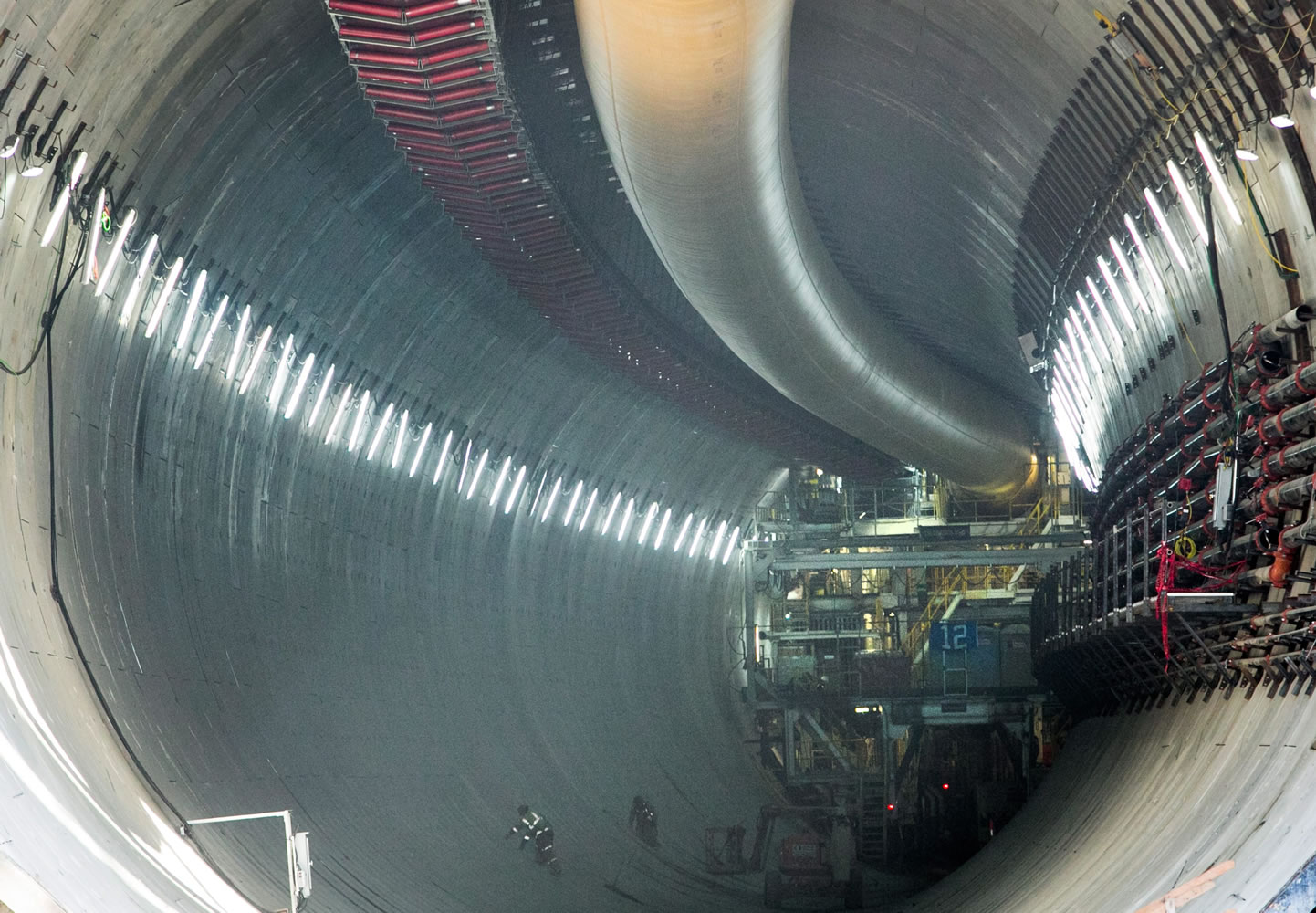Bertha is bulking up.
The stranded tunnel-boring machine will be outfitted with 216 steel ribs and plates to help it better withstand the wet and abrasive soils of Seattle. That’s 86 added tons.
The extra steel “will enhance the overall rigidity of the TBM and improve its performance,” said Chris Dixon, project director for Seattle Tunnel Partners (STP), at a news conference Monday.
Contractors hope these and other improvements will help them resume drilling next March — almost 16 months after Bertha stalled Dec. 6 last year.
The earlier goal of the state and STP, to open the Highway 99 tunnel by late next year, is blown. Officials now hope the four-lane tube will carry traffic between Sodo and South Lake Union by late 2016.
Apparently, the world’s biggest drill could use some additional core strength.
Some steel ribs will be fastened to the bearing block, which houses rotating drive parts. Other pieces will be fastened to the circular front end.
Late last year, water and sand penetrated seven rubber seals that were supposed to protect the bearing. At about the same time, Bertha overheated.
The situation suggests that engineers from Hitachi, which designed and built the $80 million, 7,000-ton leviathan, might have noticed some instability, excess vibration or other issues.
The 57-foot, 4-inch-diameter machine is testing the limits of tunnel-boring technology, which has evolved toward greater girth for half a century.
When asked Monday about what problems would be solved by the extra steel, Dixon said, “That, I don’t know.” He said his meetings with Hitachi have focused on upcoming work.
“There’s probably as many theories out there as you’d hope to find,” he said, “but there’s nothing that’s been specifically identified. Those are still under discussion, and the objective of all this is to get the TBM up and running again as soon as possible, and have it in a condition that we as STP and WashDOT as the owner are 100 percent confident that it can complete the tunnel drive.”
Buried ring pillars
To prepare for repairs, subcontractor Malcolm Drilling is building a deep pit in front of the machine, near South Main Street, by planting a ring of vertical concrete pillars. So far, 23 of the 73 buried ring pillars are in place. Dirt will be excavated from within the ring.
Then comes the most spectacular phase of the repair job.
A crane from the Mammoet company will lift Bertha’s entire 2,000-ton front end as a single hoist, rotate it a quarter-turn in the air, and set it on the surface next to Elliott Bay.
How to do this without the crane sinking?
Previously, STP built walls of concrete pillars underground, on both sides of the tunnel route. Concrete caps are being added on top of the pillars, giving the crane a sort of trackway that can support it.
In August, a ship will arrive from Osaka, Japan, with a new bearing, to be unloaded by union longshoremen. Project officials won’t know whether the old bearing is damaged until it’s disassembled this fall — but STP and Hitachi agreed to replace it as a precaution, Dixon said.
The new bearing will feature tighter, stronger seals.
Previously, the system was designed for machine operators to inject grease as needed into the bearing assembly, to create a sort of outward pressure that would repel any incoming grit. That failed.
The new seals are arranged to create four independent chambers along the bearing’s spinning surface. Dixon said different greases can be squirted into each chamber, and grit won’t be able to seep through all seven seals.
New diagrams and animations were posted Monday at wsdot.wa.gov/Projects/Viaduct/.
Non-drilling features
Meanwhile, about 250 workers are on-site, mostly to build the north and south entrances, Dixon said. That’s about 50 fewer than last year.
STP is trying to gain time on non-drilling features of the project — for instance, by installing electrical lines and utility rooms along the western edge of the tunnel tube this year, instead of waiting for Bertha to reach daylight near Seattle Center.
Seattle Tunnel Partners, led by drilling specialist Dragados of Spain and heavy-construction firm Tutor-Perini of California, have sought at least $125?million to cover repairs and delays, a request the state denied.
Dixon and Todd Trepanier, the state’s Highway 99 administrator, were reluctant to answer questions about that dispute Monday. Apparently they have chosen to set aside their differences for the time being and forge ahead with the dig.
Another positive sign is that the contractors’ timeline includes one month of schedule cushion, known as float. If the machine can be reassembled for testing by January, drilling might happen by the start of March instead of late March, Dixon said.
Nonetheless, state administrator Trepanier said, his official position remains “skeptical” about STP’s ability to restart in March 2015. The pit-building progress and the issuance of Monday’s repair plan are positive signs, he said.
Dixon denied that Bertha was the wrong kind of machine for the task. He praised Hitachi for crafting a retrofit beyond expectations.



